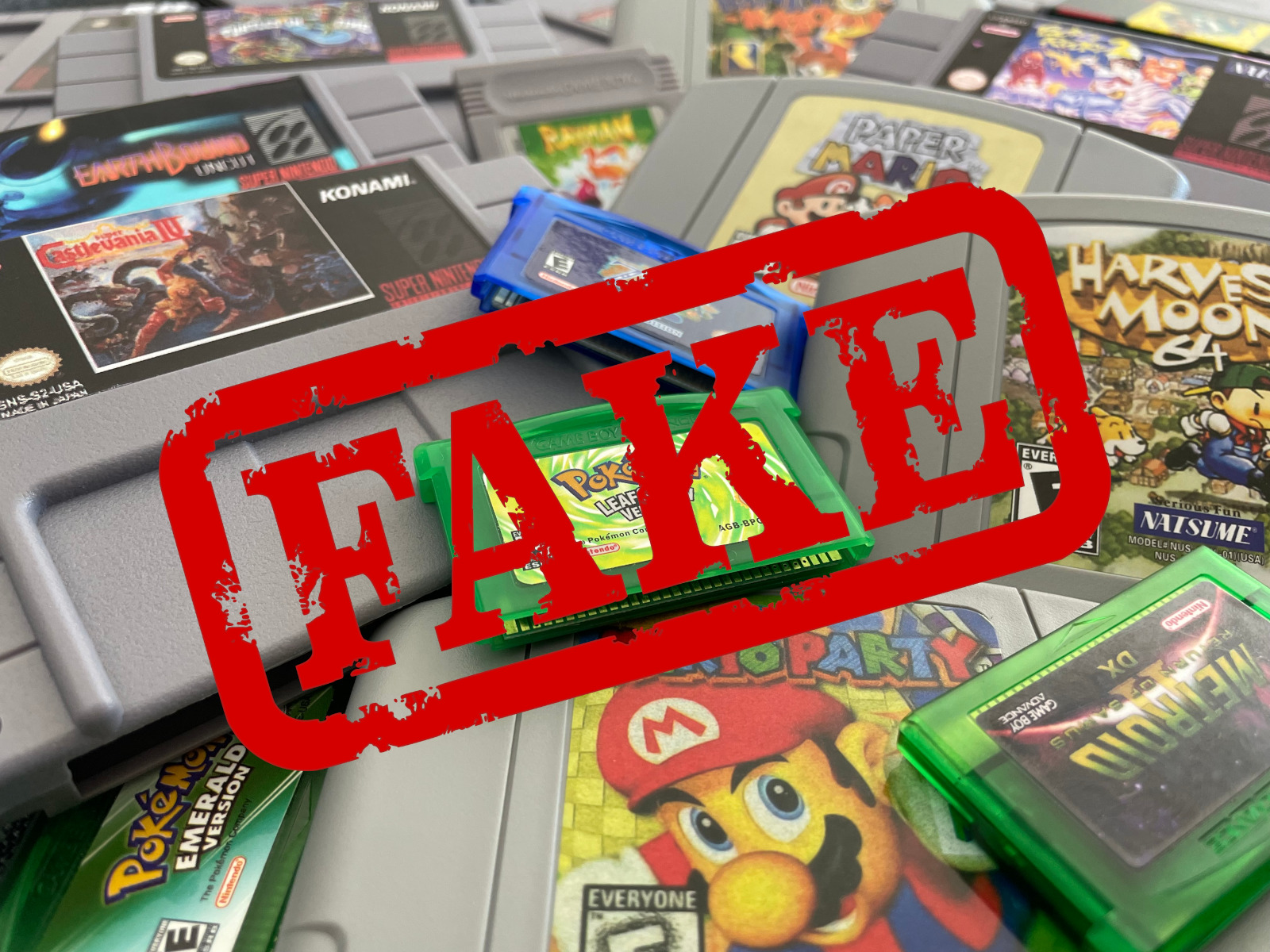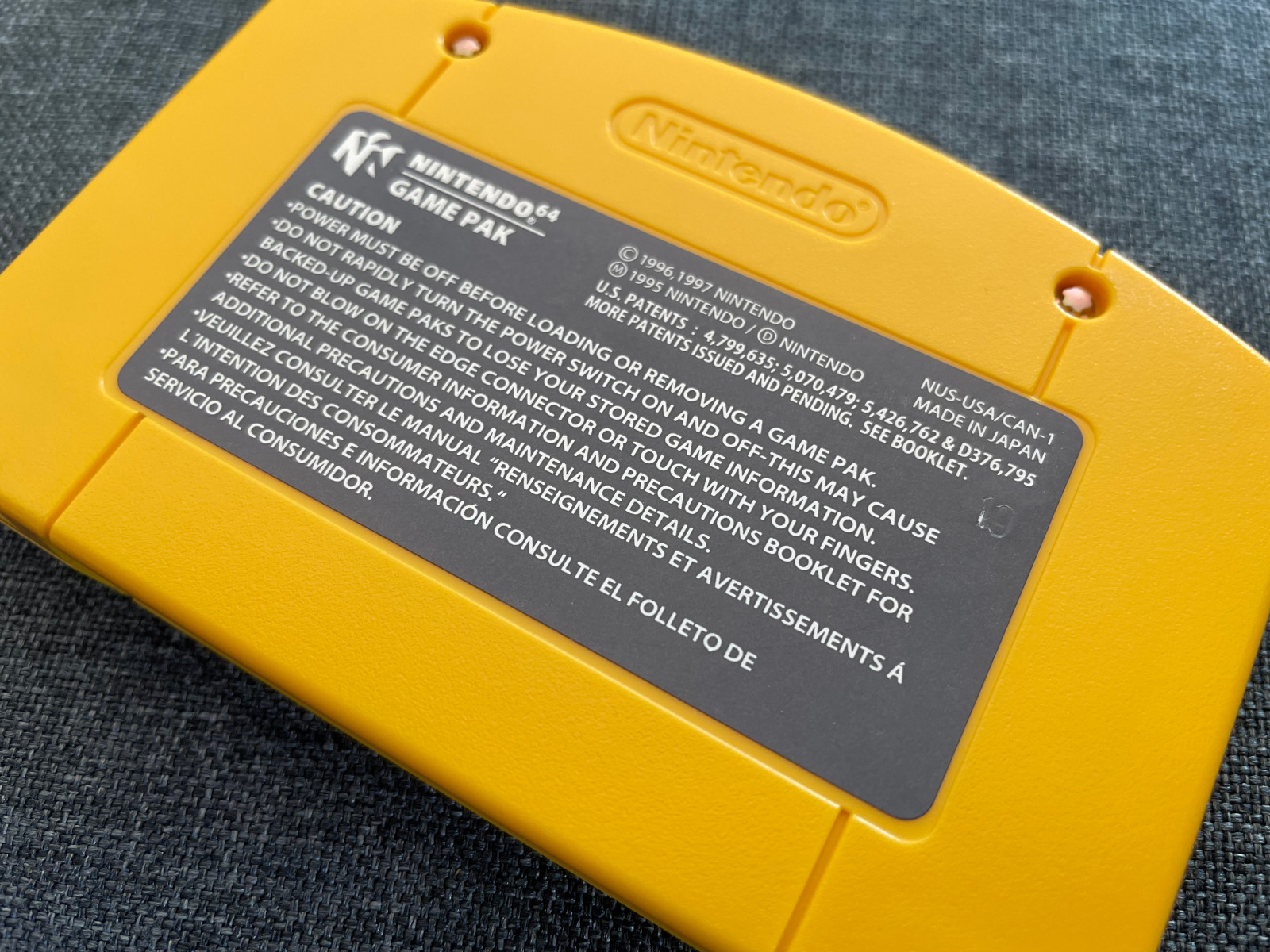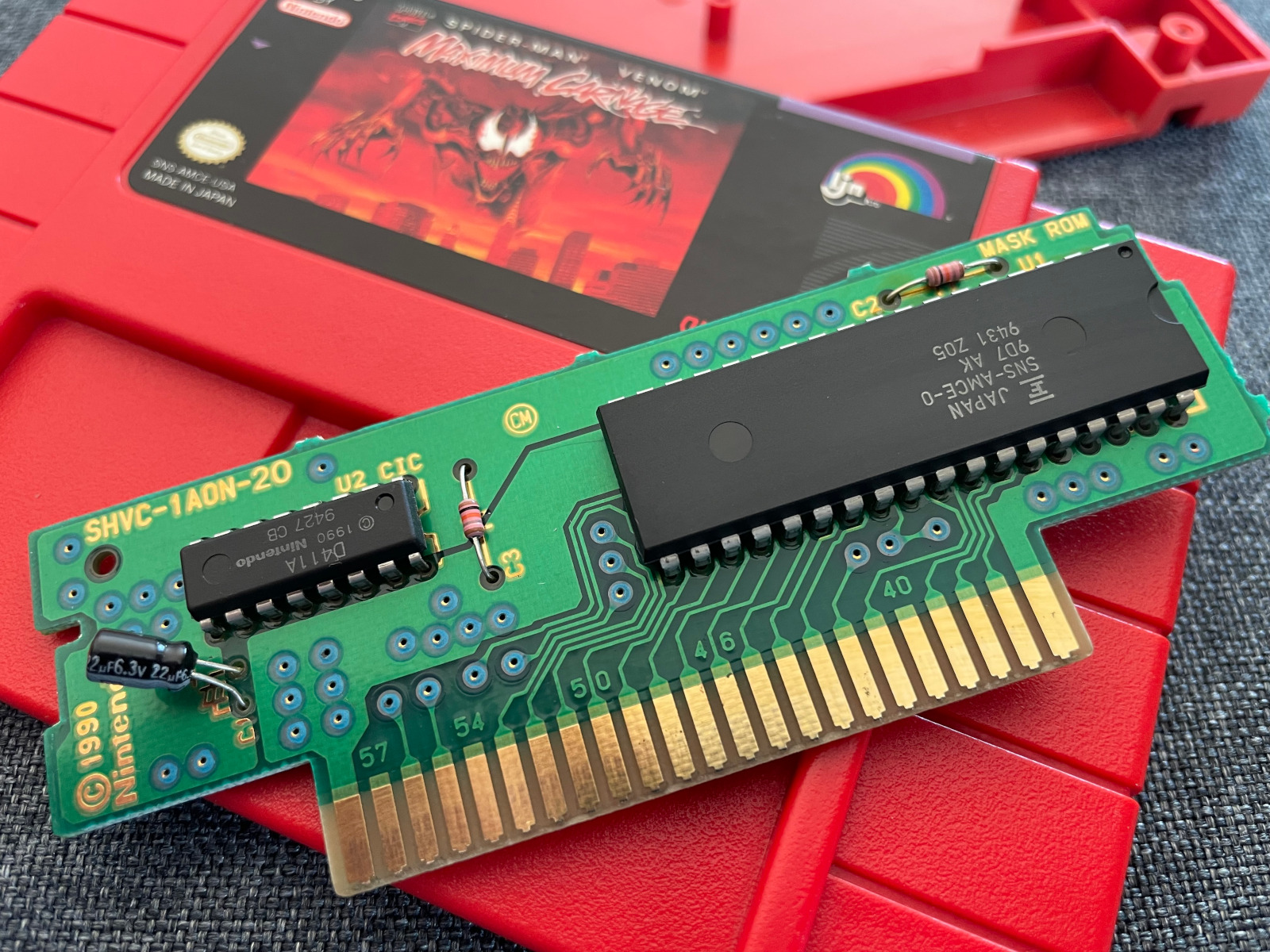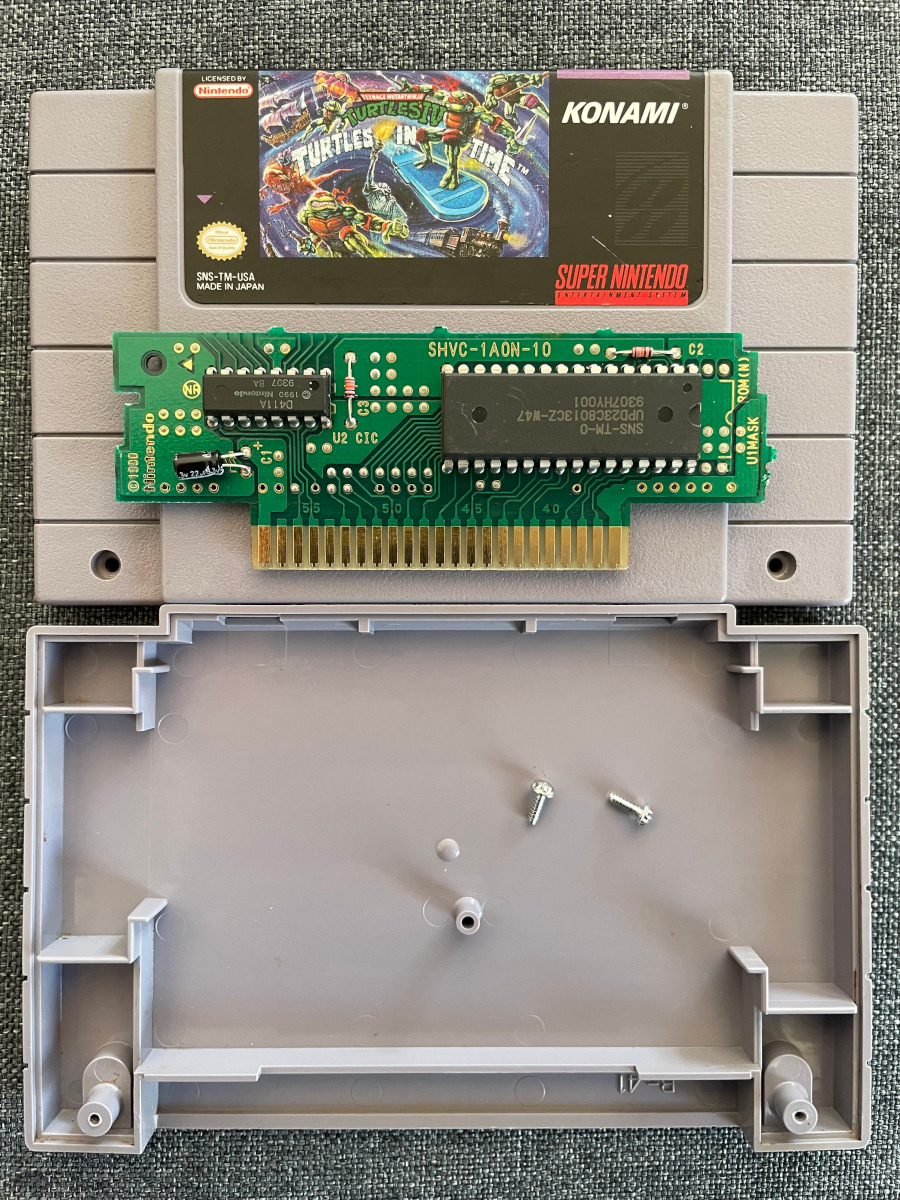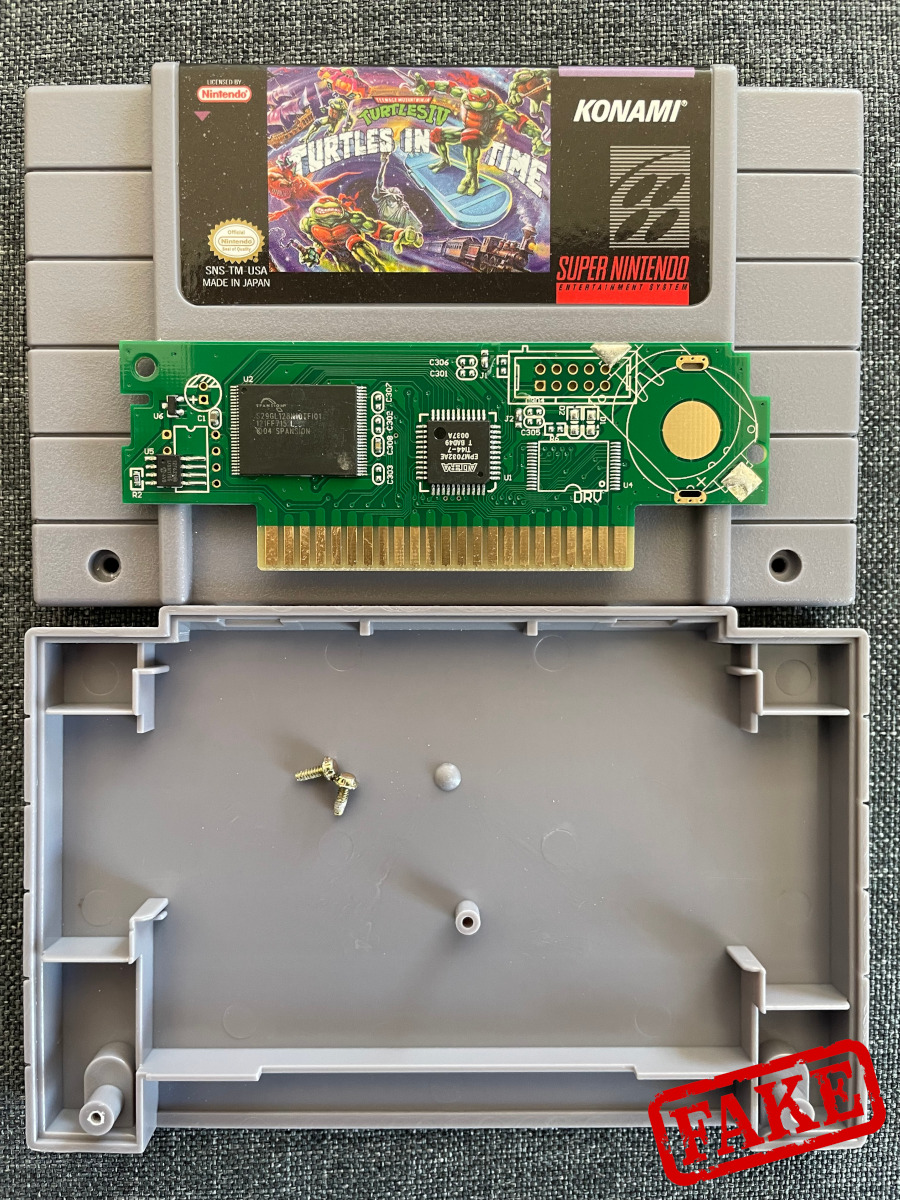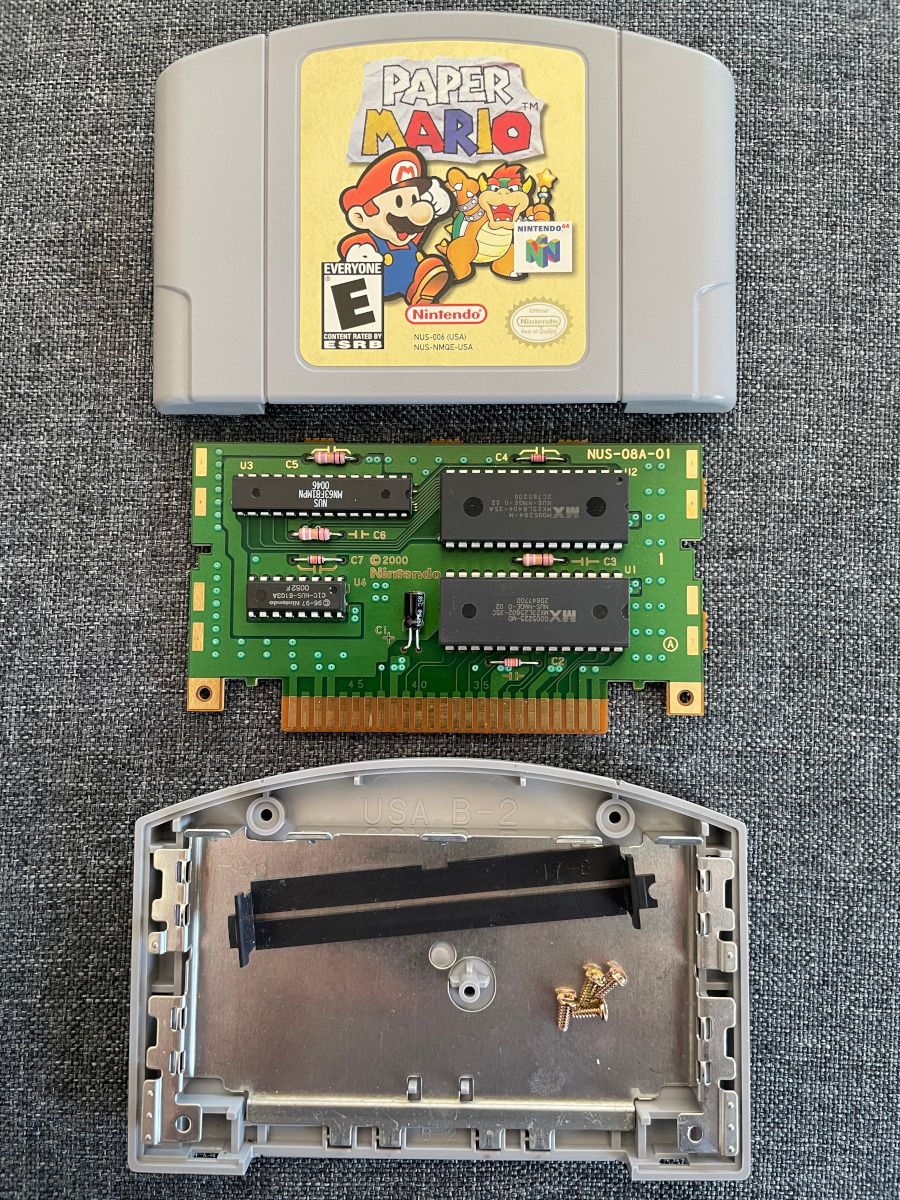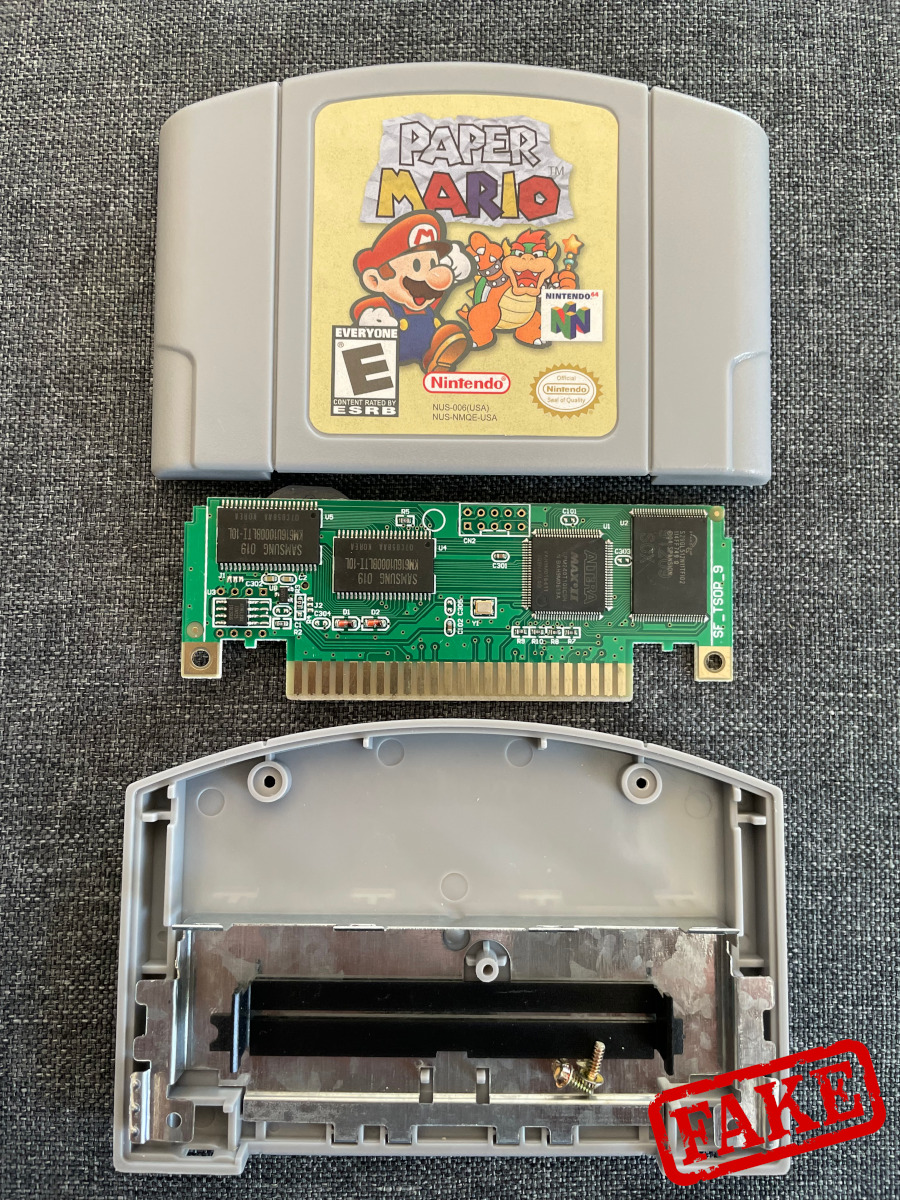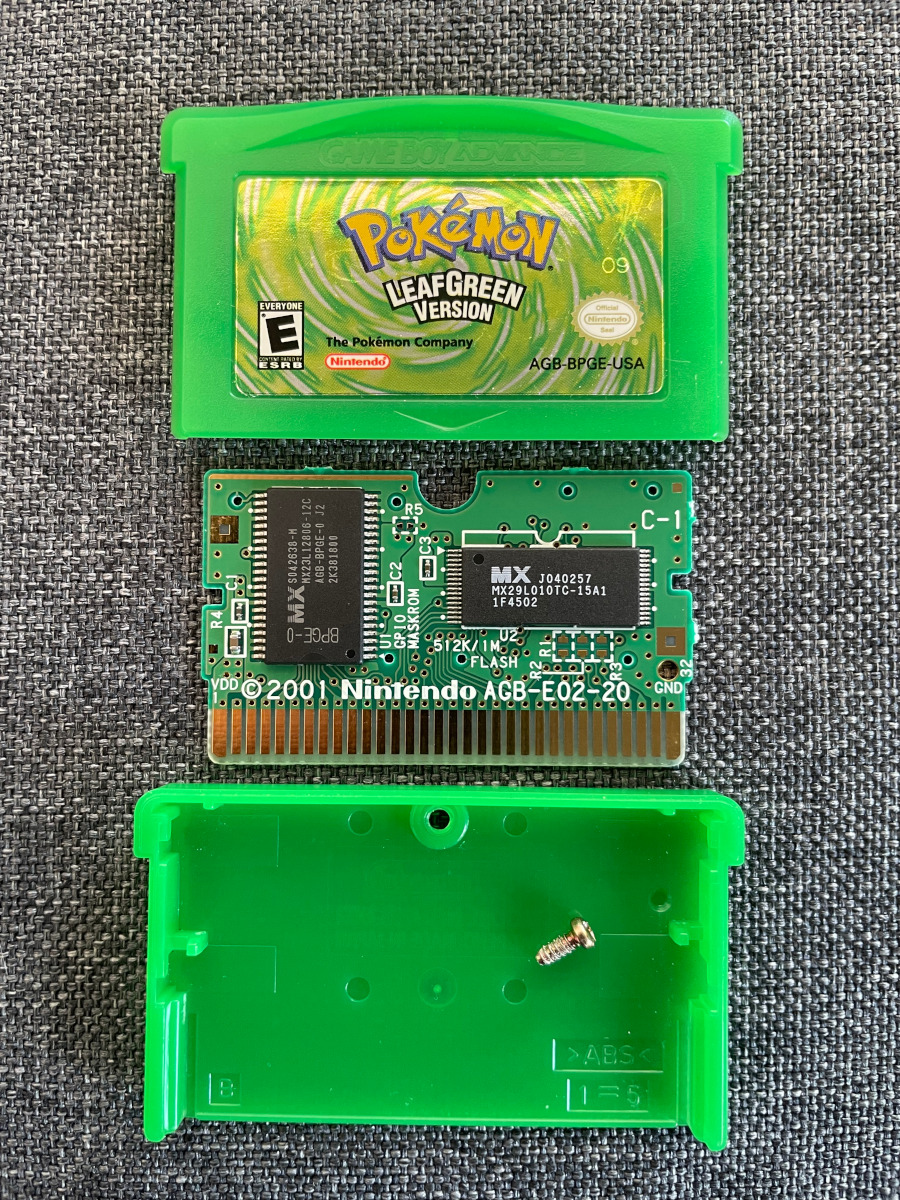Selling counterfeit cartridges in Canada
Before starting, you should know that the majority of counterfeit video games come from China and are easily accessible at low cost on AliExpress or Alibaba... As retro video games are in high demand among collectors and nostalgic gamers, many see it as an opportunity to make cash by buying large quantities in order to resell them on the North American market.
We regularly see independent sellers selling reproduction Nintendo or SEGA cartridges on Amazon, Ebay or other classified sites; but be aware that even some video game merchants have some in their inventory. Online sellers often use several schemes to fool buyers and sales platform validation robots… When you see generic “stock” photos, the term “new” or the specification of a “USA” version, it there's a good chance it's a knockoff...
Since Nintendo and SEGA have not manufactured or sold these cartridges for several years, it's unlikely that they will attempt to sue and enforce their rights against counterfeit manufacturers or sellers. On the other hand, you should know that it is completely illegal and fraudulent in Quebec and Canada to sell fakes, reproductions, counterfeits or imitations without the knowledge of the buyer. In this case, it's better to know how to detect retro game replicas during a sale or a purchase!
Learn how to examine and authenticate a retro game cartridge
There are several ways to authenticate a Nintendo or SEGA game cartridge; arm yourself with a magnifying glass and pay attention to all the fine details on the label, shell and printed circuit board (PCB) of the game. The majority of counterfeit video games are easily recognizable thanks to certain clues that give them away, while others are difficult to demystify even for the most avid collectors. Always beware of "mint" games that are more than 25-30 years old... As a general rule, used games always have small imperfections or wear.
1. Shell inspection: The appearance of a cartridge alone can help identify a reproduction. Plastic is often different in color and texture. Some cartridges (e.g. Super Nintendo) sometimes have fake plastic screws rather than metal ones. Most of the time, the engraved Nintendo logo is not identical and the imprints of the plastic injection points following the molding are not the same. However, you have to be careful since there are replacement shells for sale on Ebay or Etsy to replace those of your damaged "cassettes".
2. Label inspection: The prints of the label's imitation generally have several discrepancies with a legit copy and are very often of poor quality: more glossy or thicker sticker, badly cut sticker, darker colors, images different from the game, distorted images, distribution of visuals and logos, bad font, spelling error, no punched or stamped number, etc. Again, be careful as there are replacement labels for sale on Ebay and Etsy to replace the damaged ones on your original games.
3. Electronic card inspection: To be 100% certain of the authenticity of a Nintendo or SEGA game cartridge, you must open it with the appropriate tools and inspect the components on the printed circuit board (PCB). From my experience, game contacts are always gold plated and the printed circuit board is almost always green on a white or brown plate.
For Nintendo, Super Nintendo, Nintendo 64, Game Boy, Game Boy Color and Game Boy Advance cartridges, it's always possible to see the year and the "copyright" sign in white. In addition, the game identification code (also on the front label of the game) should be present on the main electronic circuit chip. For SEGA Master System, SEGA Genesis and SEGA Game Gear cartridges, it's a little more complex to generalize because the electronic cards were made by the game developers. However, they all have the brand of the developer (SEGA, Capcom, Electronic Arts or others) on the circuit board and on the main chip.
Finally, if you have any doubt, the best way is to compare them with other genuine copies or the information about the circuit boards available on websites like SNES Central.
Original game cartridges VS "repro" cartridges
Since a picture is worth a thousand words, I have prepared some examples of genuine cartridges (LEFT) alongside imitation cartridges (RIGHT) so that you can compare them and understand the discrepancies between them more easily. I will be able to add more as soon as I spot some in games lots.
Super Nintendo (SNES)
Nintendo 64 (N64)
Game Boy Advance (GBA)
What is the difference between a “bootleg” and “fan-made” cartridge?
In the video game world, many enthusiasts “make” cartridges from used video game parts for their personal pleasure or that of their friends. The advantage of this technique is that the parts used are of original quality and that the final result is neat (both for the support and for the software). In general, these "fan-made" cartridges have homebrew games, ROM hacks or games not released in North America.
On the other hand, Chinese video game reproductions or imitations are, for the most part, of poor quality: poor quality parts, bad version of the game, several bugs in the game, certain features not included, missing save battery, corrupted save files,… In general, these "bootleg" cartridges are popular games like Pokémon on Game Boy and Conker's Bad Fur Day on Nintendo 64 or expensive games like Little Samson on Nintendo and Chrono Trigger on Super Nintendo.
Is it worth buying a “repro” game?
It all depends on what you want to do with your games... Naturally, a collector will tend to want an original copy that will retain and/or increase in value over time. If you only want to play a particular game and the price difference between a reproduction and an authentic copy is not negligible, the option of a reproduction can be interesting, but... In all honesty, instead of spending for low quality imitations, I recommend computer or smart phone emulation instead.
Finally, the most interesting option for purists and hardcore gamers, who like to play on their old classic consoles and on a tube TV, is the purchase of a flash cartridge. These may be expensive at first, but the advantage is being able to add the complete library of your favourite console!
Last word
Whether you play on an authentic copy, a "fan-made", a chinese "repro" or even on your computer, remember that the important thing is to have some fun!

